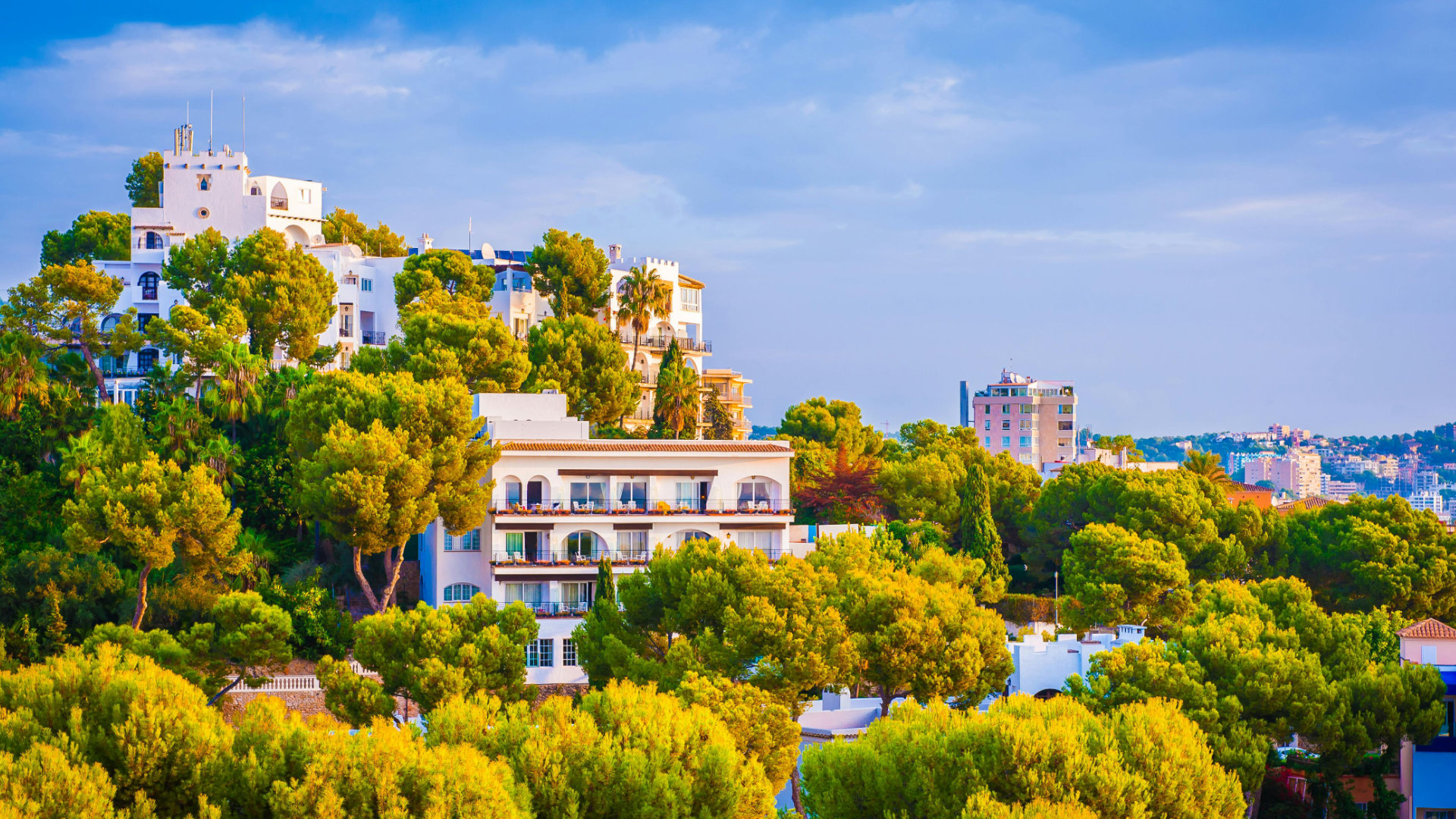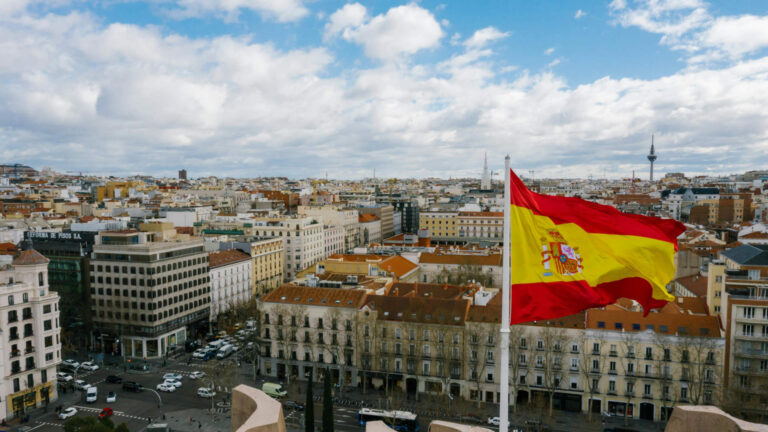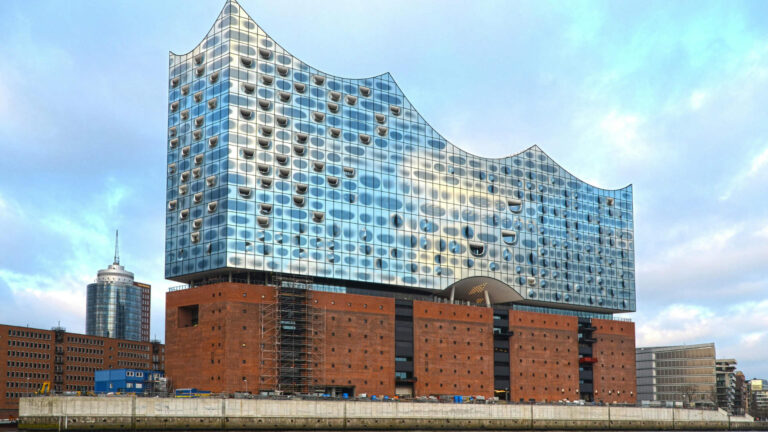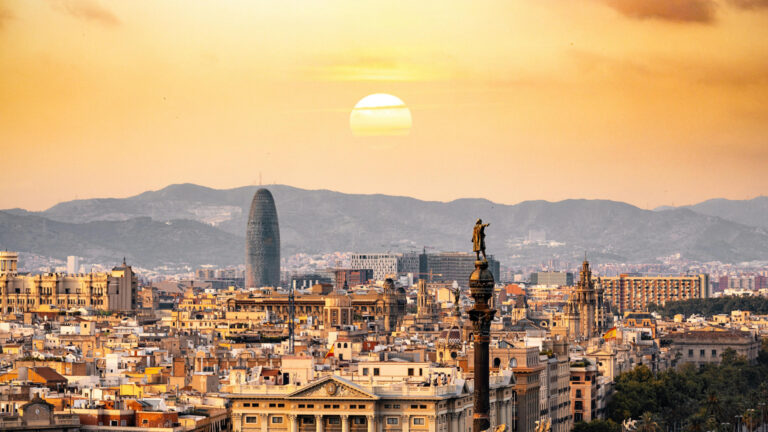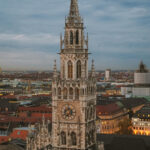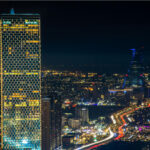Palma greeted me with the scent of the sea, carried on a warm Mediterranean breeze as I stepped onto its sun-drenched streets. The city hummed with life, a blend of history and modernity, where ancient stone buildings stood beside bustling cafés, and narrow alleys led to hidden courtyards filled with the sound of laughter and clinking glasses. The late afternoon light bathed everything in a golden hue, making the pastel-colored facades glow softly under the deep blue sky.
My first stop was the beating heart of Palma—the majestic La Seu Cathedral, its towering Gothic structure standing proudly against the backdrop of the shimmering Mediterranean. The closer I got, the more I was in awe of its intricate details, the delicate tracery of the stained-glass windows, and the sheer magnitude of its sandstone walls. Stepping inside, the space opened up in a breathtaking display of light and shadow, the famous rose window casting colorful patterns onto the stone floors. The silence inside was profound, a stark contrast to the lively city just beyond its walls.
Leaving the cathedral, I wandered through the Parc de la Mar, where the reflection of La Seu danced on the water, creating a mirror image of its grandeur. Couples strolled hand in hand, children played near the fountains, and artists sat with their sketchbooks, capturing the timeless beauty of the scene. The scent of salt and jasmine lingered in the air as I made my way deeper into the old town.
The Casco Antiguo, Palma’s historic center, was a labyrinth of narrow, winding streets, each turn revealing something unexpected—an old wooden door with ornate ironwork, a quiet courtyard shaded by orange trees, a small café where locals sipped coffee and read the morning news. I stumbled upon Plaza Mayor, a sunlit square lined with ochre-colored buildings, their balconies overflowing with cascading bougainvillea. The terraces were filled with people enjoying tapas and wine, the hum of conversation blending with the distant strumming of a Spanish guitar.
Hunger led me to Mercat de l’Olivar, Palma’s vibrant food market, where the stalls overflowed with fresh seafood, cured meats, and fragrant spices. The colors and smells were intoxicating—bright red peppers, deep purple olives, golden saffron. I ordered a simple yet exquisite dish of pa amb oli, crusty bread rubbed with ripe tomatoes, drizzled with olive oil, and topped with thin slices of jamón ibérico. The flavors were rich yet uncomplicated, a perfect reflection of Mallorcan cuisine.
As the afternoon heat softened, I made my way toward the Bellver Castle, perched on a hill overlooking the city. The walk up was steep, but the view from the top was breathtaking. Palma stretched out below me, a sea of terracotta rooftops leading to the vast expanse of blue where the Mediterranean met the sky. From here, the city seemed timeless, a place where centuries of history and culture coexisted effortlessly with modern life.
As the sun began to set, I wandered down towards the Paseo Marítimo, Palma’s lively waterfront promenade. Yachts rocked gently in the harbor, their white sails catching the last rays of light. Joggers passed by, groups of friends gathered at stylish rooftop bars, and the city began to take on a different energy—one of anticipation for the night ahead.
For dinner, I found a small marisquería tucked away in a quiet side street. The air was filled with the scent of grilled seafood, garlic, and fresh herbs. I ordered fideuà, a local variation of paella made with short, thin noodles instead of rice, infused with the flavors of saffron and seafood broth. The waiter poured me a glass of chilled white wine from a Mallorcan vineyard, its crispness perfect against the warmth of the evening. Around me, people spoke in a mixture of Catalan and Spanish, their voices rising and falling like waves.
The night in Palma had a certain magic to it. Walking back through the softly lit streets, past Palau de l’Almudaina, the royal palace that had stood for centuries, I could hear the distant echoes of live music coming from a hidden courtyard. The city felt intimate, welcoming, as if it had been waiting to reveal itself at this quiet hour.
I ended the evening by the waterfront, watching as the moonlight shimmered on the sea. Palma was more than just a coastal city; it was a place where history whispered from ancient stones, where the flavors of the land and sea told stories, and where every moment felt like an invitation to slow down and simply exist. As I sat there, the warm breeze against my skin, I knew that this was a place I would carry with me long after I had left its shores.

